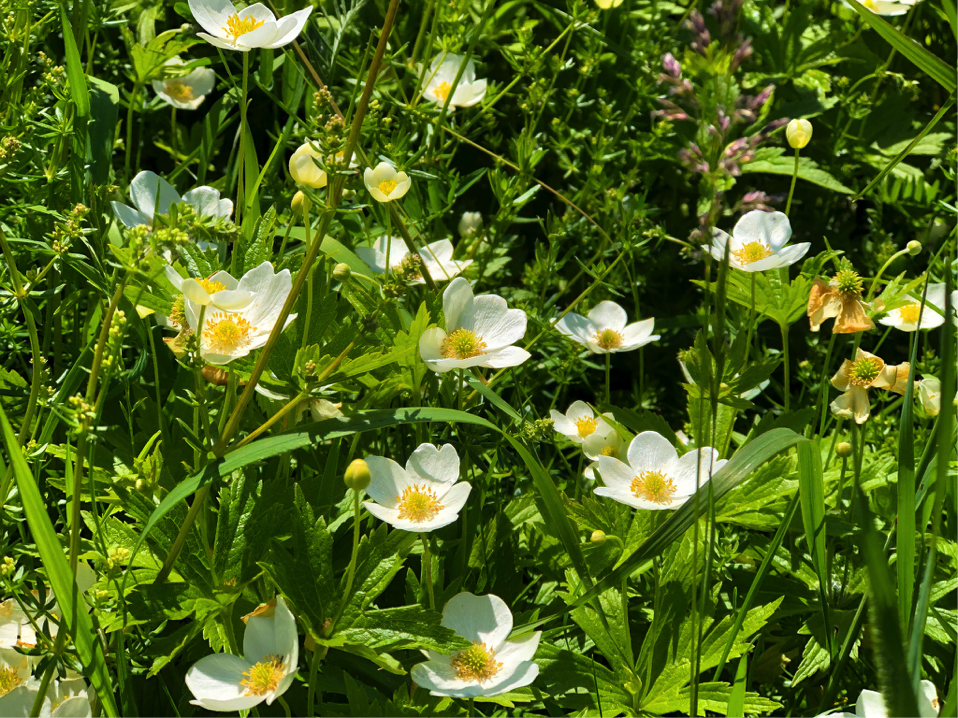
A flying beetle’s-eye-view of some low-growing Canada anemone (Anemone canadensis).
As summer heats up, daisies add their splash of white and yellow to chicory’s bright blue blooms to break up the monotone green of road verges across Ontario.
Of course, daisies (Leucanthemum vulgare) and chicory (Cichorium intybus) are late comers to the party, well behind Taraxacum officinale – dandelions. Among the first wildflowers of the spring, they dot fields with bright yellow and frustrate lawn lovers across the country.
While these plants are a perennial frustration to gardening humans, a field of weeds is an all-you-can-eat buffet to pollinators like bees and nectar-sipping butterflies.
Beetles, bees and butterflies are under threat from human factors such as habitat loss, pesticide use and climate change. Monarch butterflies, who primarily eat milkweed, have seen their population shrink 90 per cent in recent years.
Wildflowers are native plants that grow happily on undisturbed and herbicide-free land like road verges – the strips of land between roads and sidewalks. Research shows these small grassy patches might be a haven for declining pollinator populations.
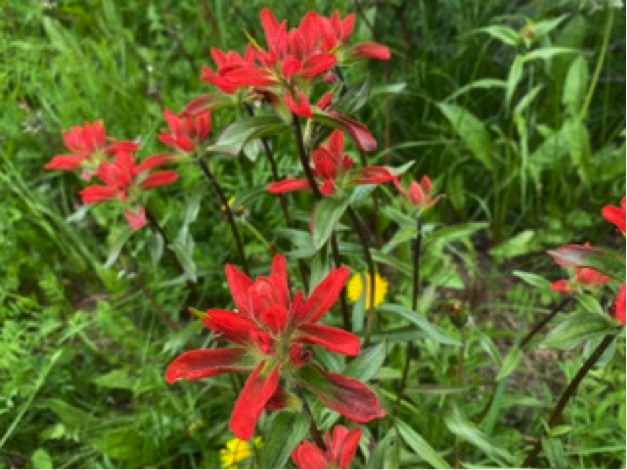
The Indian paintbrush’s (Castilleja miniata) scarlet petals can make a masterpiece of any dull roadside.
Roadsides are often lush and lively due to the extra water they enjoy from rain runoff. Unfortunately, cities often meet these vivacious displays with vigorous cutting and regular chemical treatments for both aesthetics and safety (overgrown roadsides can reduce drivers’ visibility).
Can there be equilibrium between urban and ecological demands?
Absolutely.
In a technical guide for enhancing, managing and restoring roadsides for pollinators, Pollinator Partnership Canada details how to design a pollinator-friendly roadside.
Municipalities can actively seed roadsides with native flowers. Or, they can choose to restore the verges to mimic natural prairie grasslands, an ecosystem in which local pollinators naturally thrive.
Pollinators need flowering plants throughout the spring and summer season. This allows them to nest, feed and breed.
According to the Wildlife Trust, cutting too early can be harmful. “Many wildflowers will not have a chance to flower or set seed and habitats and destroyed in the process.”
Overgrowth can be harmful, too. Competitive plants squeeze out the essential flowering ones. The Wildlife Trust recommends delaying cutting until August and the Pollinator Partnerships suggest even waiting until the fall.
Small changes like slowing mowing speed and cutting higher can support healthy roadsides, too.
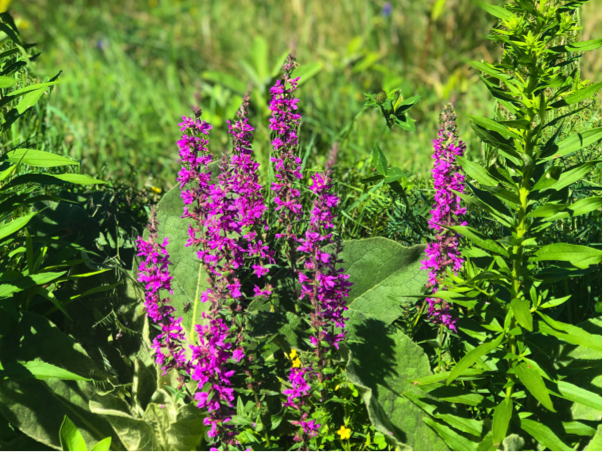
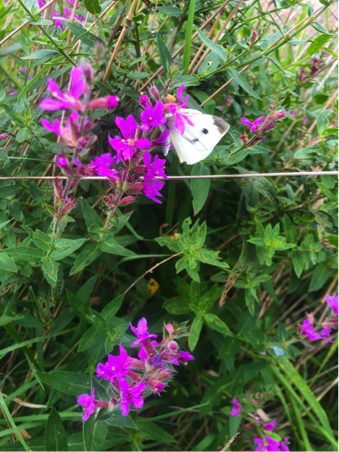
Although it is a invasive species in Canada, the purple loosestrife (Lythrum salicaria) is an excellent food source for the hungry Cabbage White butterfly (Pieris rapae).
In a 1992 British study, ecologists’ liveliest test road verges attracted 23 of the 34 butterfly species that inhabit Britain’s best nature reserves. This means that despite their proximity to fast-moving cars, the roadsides were an attractive habitat for the pollinators.
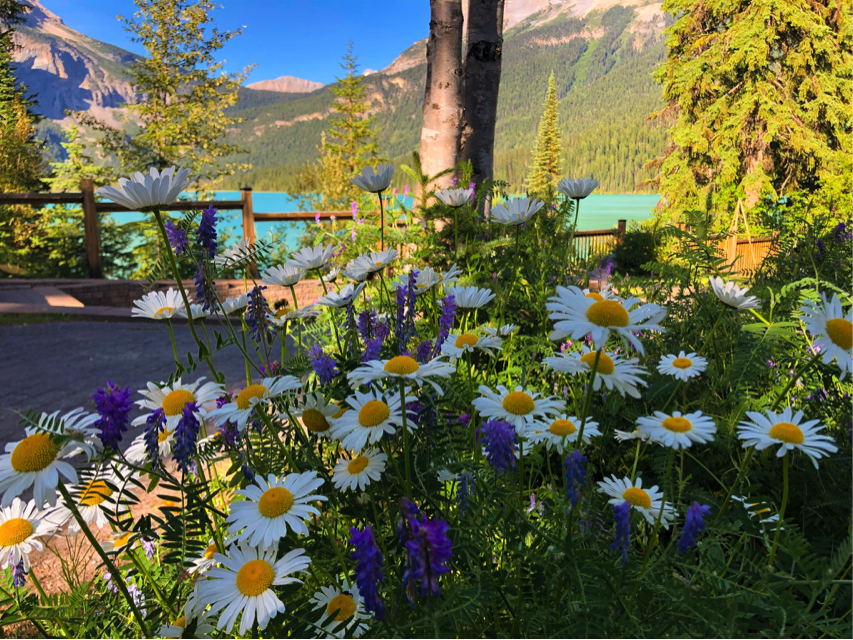
Daises (Leucanthemum vulgare) and bird vetch (Vicia cracca) are wildflowers native to Eurasia. They’ve since spread to grassy patches and roadsides around the world.
Usually, road verges are uniform: They’re covered in a deep layer of soil, treated with fertilizers, and seeded with alien grasses. The pollinator-friendly verge, according to the study, has a range of plants, irregular topography and occasional, late-summer cuttings.
Pesticides can also be a key factor in pollinator health. A direct impact of herbicides is a drop in available pollen and nectar.
Removing flowering species will reduce food for pollinators according to Pollinator Partnerships. They recommend keeping herbicides and insecticides as a last resort, such as when a stubborn invasive plant is damaging or out-competing native ones.
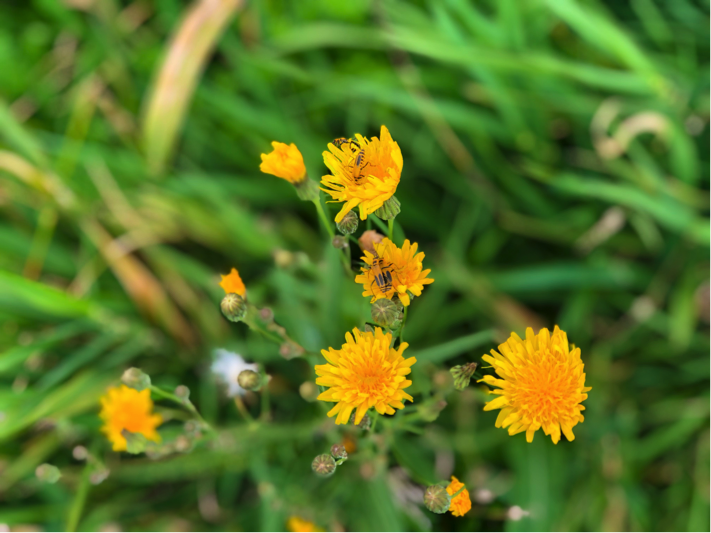
The Goldenrod soldier beetle (Chauliognathus pensylvanicus) is a productive pollinator that you might mistake for a wasp. Can you spot all four on this sowthistle (Sonchus arvensis)?
Insecticides can also be poisonous for non-target bugs. They can persist in soil for years, trickling to parts of land, such as roadsides, that never needed treatment.
Well-managed roadsides designed with healthy ecology in mind support native plants, host local wildlife and boost pollination throughout the spring and summer.
With hundreds of thousands of kilometres of roads and roadsides, seemingly minor verges can be a vibrant ecosystem for local plants and pollinators.
Let’s all share the road: buses, bikes, bees, and butterflies.
Resources:
By: Adenieke Lewis-Gibbs

Adenieke Lewis-Gibbs is a Journalism and French double major at Carleton University. Her pastimes include reading, painting and enjoying the outdoors - real jungles and concrete jungles alike. She is a repeat sustainability and circular economy writer and a both a big fan and a big sceptic of recycling. She is just as excited move back home to Toronto after school as she is to travel the world.
